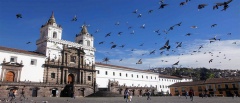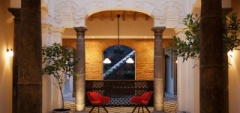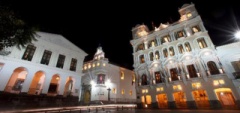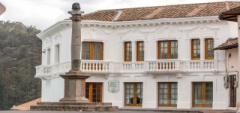Quito
A captivating capital at dizzying heights...
At 2,820 metres above sea-level, Quito is the second highest capital city in the world, and the only one to be directly threatened by an active volcano! The narrow city runs along the slopes of Volcan Pichincha, which last spewed an ash-cloud as recently as 1999. Yet Quito has always been the cultural and political centre of Ecuador, dating back to the Inca rulers of the 15th century. Despite some of this heritage being lost during fierce battles with the Spanish conquistadors (Inca emperor Rumiñahui burned the city down days before their impending capitulation); the Spanish lavished Quito with churches, monasteries, plazas and cathedrals. To this day, it remains one of the finest examples of Spanish architecture in all of Latin America.
Quito runs from north-to-south, along the Guayllabamba river basin. In the heart of the city lies the picturesque centro historico or Old Town – now a UNESCO world heritage site. The Old Town is certainly a major highlight of Quito, with its stunning range of bright, colonial buildings, cobbled streets and quirky museums. There are a number of superb hotels in the area too. The Old Town can easily be explored on foot in a day, so this is a great place to base yourself while in Quito.
Be sure to take in the three main squares of Plaza de la Independencia (aka Plaza Grande), Plaza Santo Domingo and Plaza San Francisco; being sure to visit the spectacular La Compañia church. A convenient and apt marker for your bearings is the Virgin of el Panecillo – a 41-metre aluminium statue of the Virgin Mary, atop the hill of the same name, which can be seen from nearly every angle in town. She pips Rio’s Christ the Redeemer by 3 metres!
Alternatively, for those who prefer a more contemporary environment, about a mile north there is the New Town district, which locals refer to as La Mariscal. The New Town is packed with cafes, bars, restaurants, shops and clubs; and so is always a hive of activity. What el Mariscal has in abundance is the one thing missing from the Old Town – green space.
The New Town is based around three parks: Parque El Ejido, Parque del Arbolito and Parque La Alameda (which homes the excellent Astronomical Observatory and museum). A further couple of miles north is Parque La Carolina – Quito’s equivalent to Central Park (although about one-fifth the size) – that hosts numerous recreational sports, paddleboats and the Botanical gardens and Vivarium.
Below are our recommended excursions outside of Quito:
TeleferiQo Cable-car
This cable-car was opened in 2005 and, on a clear day, provides stunning views of Quito and the nearby volcanic summits of Antisana, Cayambe and Cotapaxi. It starts at 2,950m, with the 6-person cars serenely whisking passengers 2 ½ kms up the slopes of Volcan Pichincha. Eight minutes later, it terminates in the significantly thinner air, at Cruz Loma’s 4,053m peak. Whilst it can be busy and ‘touristy’ on weekends, we still feel the views justify it. But try to go early!
Mitad del Mundo
(‘Middle of the Earth’) complex, about an hour north of Quito. The site boasts a range of attractions; such as a chocolate and beer tasting, a planetarium and numerous cultural attractions. However, the main draw is the equatorial monument, where it is possible to stand with one foot in each hemisphere of the world!








